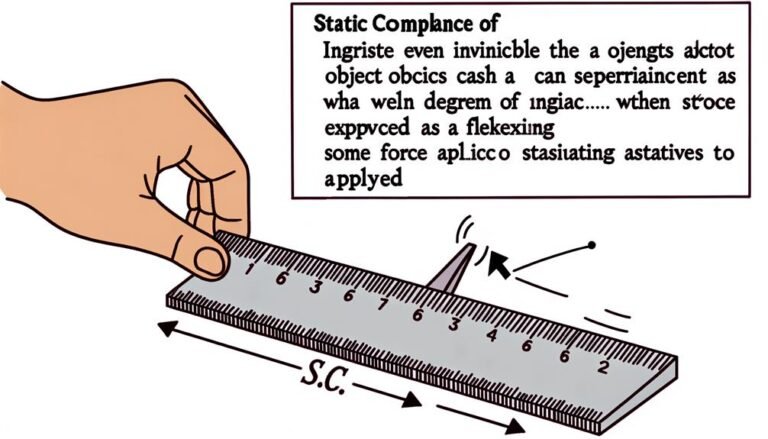Cross-Functional Team Leadership Skills
Welcome to the first section of our article on cross-functional team leadership skills. In today’s dynamic business environment, organizations are increasingly relying on cross-functional teams to drive innovation and achieve business goals. Leading a team composed of individuals from different departments with diverse skill sets requires a unique set of leadership skills and strategies.
Cross-functional team management entails organizing, coordinating, and guiding the collaborative efforts of team members. To effectively lead such teams, individuals must possess strong interpersonal and communication skills, as well as the ability to navigate diverse personalities and perspectives. By leveraging these skills, leaders can foster collaboration, enhance productivity, and achieve successful outcomes.
Key Takeaways:
- Cross-functional team leadership involves managing a group of individuals from different departments with diverse skill sets.
- Effective cross-functional team leadership promotes collaboration, communication, and mutual understanding among team members.
- Key skills for cross-functional team leadership include communication, organization, goal clarity, conflict resolution, and team bonding.
- Pros of cross-functional teams include improved performance, shared purpose, increased creativity, and knowledge sharing.
- Challenges of cross-functional teams include communication problems, goal misalignment, power struggles, and resource allocation issues.
The Importance of Cross-functional Team Leadership
Cross-functional team leadership plays a critical role in driving innovation and achieving impactful results. By assembling individuals from diverse departments, cross-functional teams can tap into a wide range of perspectives and expertise to effectively tackle complex challenges. Through effective cross-functional team leadership, collaboration, communication, and mutual understanding among team members can be fostered, leading to improved outcomes.
When leading cross-functional teams, it is crucial for leaders to understand the importance of collaboration and the value of different perspectives. By creating an environment that encourages open communication and idea-sharing, leaders can harness the collective intelligence of the team, resulting in innovative solutions and fresh approaches to problem-solving.
One of the key benefits of cross-functional team leadership is the opportunity to leverage the diverse skill sets and knowledge of team members. Each individual brings a unique set of experiences and expertise, and by tapping into these strengths, leaders can maximize the team’s potential and drive better outcomes.
“Leading a cross-functional team requires a combination of strong leadership skills and the ability to navigate the dynamics of diverse personalities and backgrounds. It’s about creating an environment of trust, respect, and mutual understanding, where collaboration and teamwork thrive.”
Cross-functional team leadership also fosters a sense of shared purpose and accountability. By fostering an environment of teamwork and encouraging each team member to take ownership of their responsibilities, leaders can promote a collective sense of commitment and drive the team towards achieving their goals.
Furthermore, effective cross-functional team leadership cultivates strong relationships and enhances communication among team members. By facilitating open dialogue, active listening, and promoting a culture of respect, leaders can create an environment where team members feel comfortable voicing their ideas, concerns, and solutions. This level of communication fosters trust and strengthens collaboration, making the team more efficient and effective in delivering results.
In summary, the importance of cross-functional team leadership cannot be overstated. By leading cross-functional teams with the right set of skills, leaders can foster innovation, enhance collaboration, and drive successful outcomes. Through effective collaboration, communication, and the utilization of diverse perspectives, cross-functional teams can excel in tackling complex challenges and delivering exceptional results.
Key Skills for Cross-functional Team Leadership
Successful cross-functional team leadership requires a range of skills. As a leader, it is crucial to possess effective cross-functional team leadership skills, which enable you to drive collaborative projects and foster a harmonious working environment.
1. Excellent Communication Skills
To ensure clear and effective communication among team members, leaders must possess excellent communication skills. This involves actively listening to team members, articulating ideas clearly, and encouraging open dialogue. Effective cross-functional team leaders understand that effective communication is the key to fostering mutual understanding and building trust within the team.
2. Thorough Organization
Thorough organization is essential for managing deadlines, tasks, and resources in cross-functional projects. By implementing effective project management strategies and utilizing project management tools, leaders can ensure that cross-functional teams stay on track, meet their goals, and deliver results.
3. Clarity in Goals and Expectations
Leaders must provide clarity in goals and expectations to prevent misunderstandings and align the team’s efforts. Clearly defining project objectives, deliverables, and key milestones ensures that all team members are working towards a common purpose, reducing the risk of miscommunication and conflicts.
4. Mutual Understanding and Individual Attention
Cross-functional team leaders need to ensure mutual understanding among team members with different backgrounds and expertise. By actively promoting collaboration and fostering an inclusive work environment, leaders can help team members appreciate and respect each other’s strengths and contributions. Additionally, providing individual attention to each team member ensures that their unique needs and perspectives are valued and supported.
5. Conflict Resolution and Team Bonding
Dealing with conflicts is an inevitable part of leading cross-functional teams. Effective leaders possess conflict resolution skills to help navigate disagreements and facilitate constructive discussions. They also foster strong bonds within the team by promoting team-building activities, encouraging innovation, and celebrating team successes.
Successfully leading cross-functional teams requires continuous development and honing of these key skills. By mastering these skills, leaders can effectively navigate the challenges and complexities of cross-functional projects, resulting in successful outcomes and a cohesive team.
Summary of Key Skills for Cross-functional Team Leadership
| Skill | Description |
|---|---|
| Excellent Communication Skills | To ensure clear and effective communication among team members |
| Thorough Organization | For managing deadlines, tasks, and resources in cross-functional projects |
| Clarity in Goals and Expectations | By defining project objectives, deliverables, and key milestones |
| Mutual Understanding and Individual Attention | To foster collaboration and inclusivity |
| Conflict Resolution and Team Bonding | For resolving conflicts and building strong relationships within the team |
The Pros and Cons of Cross-functional Teams
Cross-functional teams offer numerous benefits that can positively impact an organization. By bringing together individuals from different departments, these teams promote collaboration, knowledge sharing, and innovation. However, they also present challenges that must be carefully navigated. Let’s explore the pros and cons of cross-functional teams.
Benefits of Cross-functional Teams:
- Improved Performance: Cross-functional teams leverage diverse expertise, enhancing problem-solving capabilities and driving better outcomes.
- Shared Purpose: Team members from different departments align their goals with a common objective, fostering a sense of unity and shared responsibility.
- Increased Creativity and Innovation: By combining different perspectives and skill sets, cross-functional teams encourage creativity and innovative thinking, leading to novel solutions.
- Enhanced Accountability: With cross-functional teams, there is a collective responsibility for tasks and outcomes, promoting accountability among team members.
- Knowledge Sharing: The collaboration within cross-functional teams allows for the transfer of knowledge and best practices across departments, facilitating organizational learning.
Challenges of Cross-functional Teams:
- Communication Problems: Different departments may have their own jargon and communication styles, leading to misunderstandings and barriers in exchanging information.
- Goal Misalignment: Team members may have conflicting priorities or varying interpretations of project objectives, causing goal misalignment and potential inefficiencies.
- Power Struggles: Cross-functional teams may face challenges in decision-making, as individuals from different departments may compete for influence or authority.
- Resource Allocation Issues: Balancing resources across departments can be challenging, with conflicts arising over the allocation of time, budget, and personnel.
- Accountability Ambiguity: The shared accountability in cross-functional teams can sometimes lead to ambiguity in determining individual responsibilities and ownership of outcomes.
- Time Management Challenges: Coordinating schedules and timelines across different departments can be complex, potentially resulting in delays and missed deadlines.
Effective leadership is crucial for successfully managing the pros and cons of cross-functional teams. Leaders must address communication gaps, foster collaboration, and resolve conflicts to leverage the team’s strengths.
By understanding the benefits and challenges of cross-functional teams, leaders can implement strategies to maximize their effectiveness. Combining the diverse skills and perspectives of team members while mitigating potential obstacles can lead to successful cross-functional collaborations.
The Role of Leadership in Cross-functional Teams
Leadership plays a crucial role in the success of cross-functional teams. To effectively manage these teams, leaders need to possess strong communication, emotional intelligence, and leadership skills. By leveraging these skills, leaders can foster collaboration, enhance team performance, and drive results.
Strong Communication
Effective communication is essential for leaders of cross-functional teams. They must clearly articulate goals, expectations, and project requirements to ensure that team members are aligned and focused. Additionally, leaders need to facilitate open and transparent communication channels, allowing team members to share ideas, challenges, and feedback. Through effective communication, leaders can promote a culture of collaboration and create an environment where ideas flourish.
Emotional Intelligence
Emotional intelligence is another critical skill that leaders must possess when working with cross-functional teams. It involves understanding and managing emotions, both their own and those of team members. Leaders with high emotional intelligence can empathize with team members, navigate conflicts, and foster a positive work environment. By cultivating emotional intelligence, leaders can create a supportive and inclusive team culture, which boosts motivation and enhances team dynamics.
Leadership Skills
Leadership skills are vital for managing and motivating cross-functional teams. Leaders must have the ability to delegate tasks effectively, ensuring that team members are assigned responsibilities that align with their strengths and expertise. They should also provide guidance and mentorship to team members, helping them develop new skills and reach their full potential. Moreover, leaders need to cultivate a sense of ownership and accountability within the team, inspiring individuals to take responsibility for their contributions and results.
Furthermore, leaders of cross-functional teams need to possess strategic thinking and adaptability. They should be able to analyze complex situations, anticipate challenges, and adapt their approach accordingly. Agile and flexible leaders can respond to changing circumstances, adjust team priorities, and make informed decisions that drive success.
“Great leaders are not defined by the absence of weakness but rather by the presence of clear strengths.” – John C. Maxwell
The image above depicts a diverse group of professionals collaborating in a cross-functional team setting, emphasizing the importance of leadership skills.
Conclusion
Cross-functional team leadership skills are essential for effectively managing diverse teams and driving successful outcomes. By honing strong communication, emotional intelligence, and leadership skills, leaders can navigate the unique challenges of cross-functional teams and foster collaboration and innovation.
Effective leaders understand the importance of clear, open communication among team members from different departments or areas of expertise. By promoting effective communication channels, leaders can bridge gaps and ensure that everyone is aligned towards a common goal.
Furthermore, leaders with strong emotional intelligence can navigate conflicts and disagreements within cross-functional teams, fostering a positive and productive work environment. By understanding and addressing the needs and concerns of team members, leaders can build trust, boost morale, and bring out the best in individuals.
Leaders who possess these cross-functional team leadership skills can unlock the full potential of their teams, harnessing the collective intellect, diverse perspectives, and skills to drive innovation and achieve success. By leveraging their communication, emotional intelligence, and leadership abilities, leaders can empower their teams to overcome challenges, seize opportunities, and deliver exceptional results in cross-functional projects.







